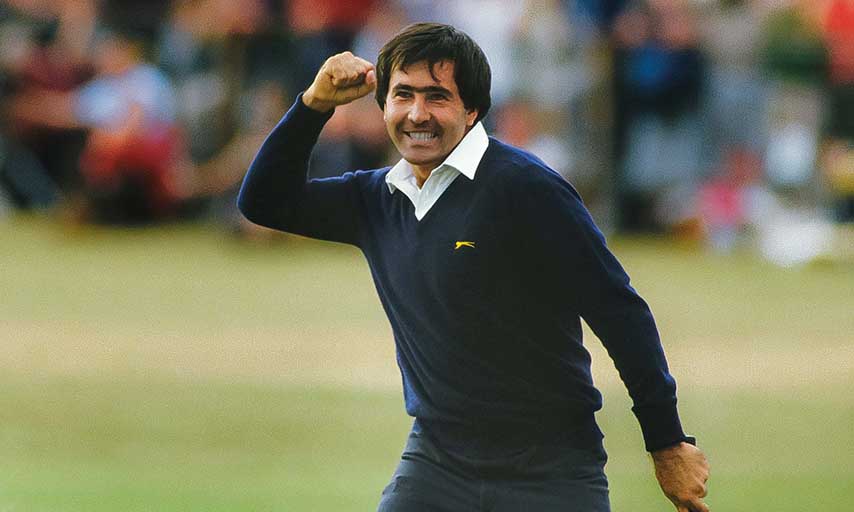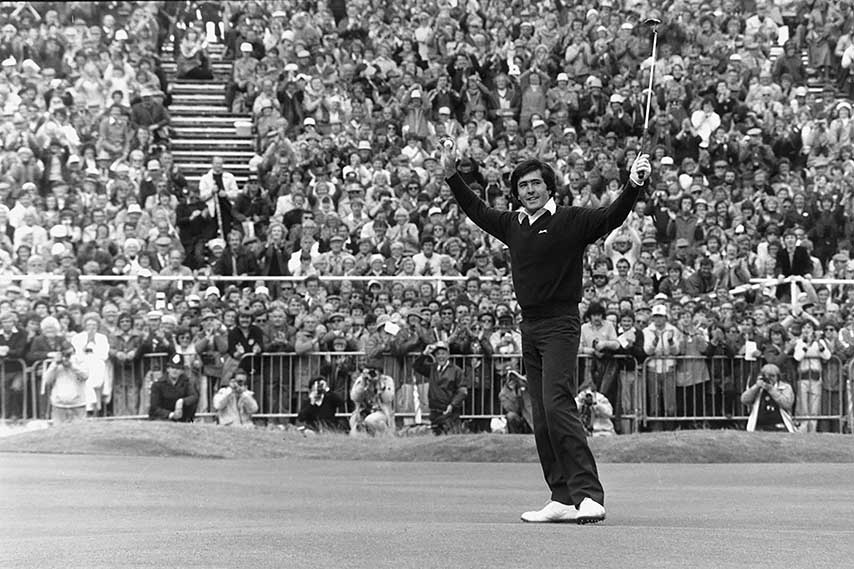The finest Spanish golfer of all time, one of the most successful Europeans in golfing history and a legendary star
on the world stage, Severiano Ballesteros Sota - the great Seve - savoured an unforgettable moment in his stellar professional career on 22 July 1979. The then 22-year-old from the modest Cantabrian town of Pedreña raised the famous Claret Jug trophy at Royal Lytham & St. Annes Golf Club as the new British Open champion.
Seve was unable to hold back the tears after he finished his last round, and embraced his three brothers. It was his fifth assault on the British Grand Slam championship. In the first, in 1975, he missed the cut, but in the second he went close to victory after leading on the first three days, eventually succumbing at the end and tying for second with Jack Nicklaus behind Johnny Miller, who won with a final round 66. In 1977, Seve was 15th and the following year 17th.
However, the summer of '79 arrived and things were finally set to go well for Ballesteros in the venerable tournament founded in 1860. It didn’t start at all well, when he signed a first round 73, eight shots behind the tournament leader , Scotland’s Bill Langmuir, and one adrift of two legendary figures, Jack Nicklaus and Tom Watson.

Seve was not someone who became intimidated by a bad start, and the second day he carded the best round of the day, a 65, which pushed him up to second, two strokes behind American Halle Irwin. Behind him by one stroke was Longmuir, with Watson and Nicklaus two and three shots back, respectively.
In the third round, adverse weather conditions were reflected in the results. Nevertheless, despite both signing for 75s, Seve and Irwin maintained their top-two positions at the top of the standings, with Mark James and Nicklaus a stroke behind the Spaniard.
Then the big day arrived, and Seve displayed all his magic, while Irwin sank down the leaderboard and signed one of the worst cards of the day, a 78. The Spaniard astonished everyone with his approach to the 16th green from a parking lot, where he had intentionally hit the ball from the tee because it meant he gained distance and he knew that he could take a drop without penalty. With a final 70 for a total of 283 (one-under), Seve triumphed by three shots over runners-up Nicklaus and Ben Crenshaw. His victory earned him a a prize of 15,000 pounds.
At 22 years of age, the talented star from Pedreña became the youngest British Open champion in the 20th century, a record he maintains this century.
It was the first of his five total majors: two more in the British Open (1984 and 1988) and the 1980 and 1983 US Masters.
During a hugely successful career, Seve tallied 96 professional victories, including 50 on the European Tour, nine on the US PGA Tour, five World Match Play Championships and two World Cups for Spain. He won five Ryder Cups, the last as captain (Valderrama 1997) and six Orders of Merit on the European Tour, between 1976 and 1991.
In July 2007, at the age of 50, he announced his definitive retirement as a professional golfer. In October 2008, he was admitted to a hospital in Madrid after suffering a momentary loss of consciousness. A week later, Seve himself confirmed to the media that he had a brain tumour.
The greatest Spanish golfer of all time, who debuted as a caddy when he was just nine years old and who turned professional at 17, died at home on 7 May 2011, aged 54.




